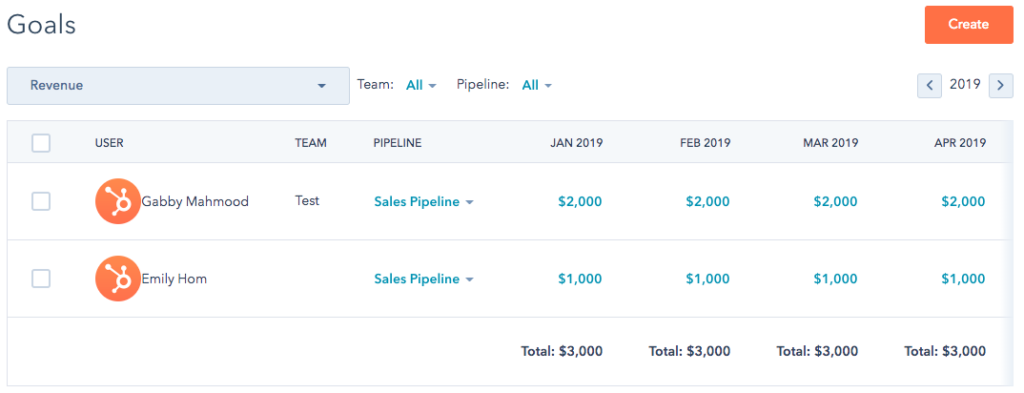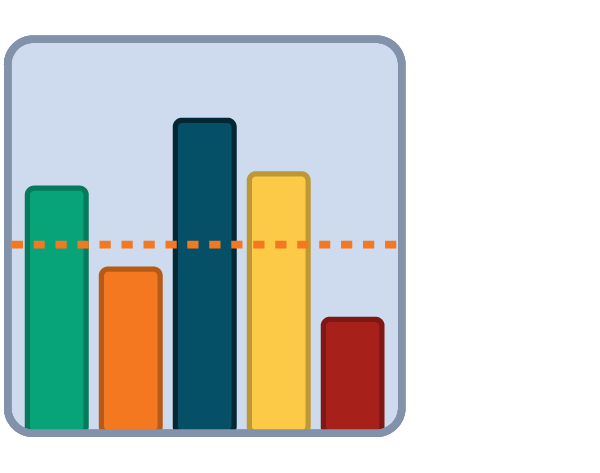There’s one practice virtually every business does no matter the industry, target customer, product, or service? They set goals. These goals may be company-wide or department-specific. Regardless, without goals, it is difficult for employees to understand their role and what is expected from them.
Goals ensure employees are driven, on-task, and producing work that impacts the business’s bottom line. This means your business is constantly striving to grow, improve, and most importantly – boost revenue. All goals are important to your business’s success, but for Sales goal setting is more critical than anywhere else.
HubSpot has the perfect tools to help you get started on the right path towards setting and reaching sales goals. Sales goals in HubSpot make it easy to track, measure, and report on how your sales reps are doing on their goals to keep themselves accountable and so the company know they are on the right track.

What are sales goals in HubSpot?
Sales goals are set objectives for a team to work towards. They keep reps motivated by providing incremental and encouraging targets to focus on – typically on a weekly, monthly, quarterly, or yearly basis.
Create benchmarks for your team.
One big way sales goals can help your business is by providing your sales reps with attainable benchmarks that give them context for what success looks like on your team. For example, if all of your reps are able to achieve their goals well in advance of a deadline you set, you’ll have a benchmark for what should be achievable again in the future.

Evaluate individual and team-wide success.
Sales goals also allow you to evaluate the success of your sales team as a whole, and the individual reps who make up the team.
By looking at who is and isn’t hitting their goals on a consistent basis, you’ll be able to determine whether or not you need to make any necessary adjustments. This might mean adapting your goals in some way such as making your goals more or less aggressive, setting new types of goals or implementing your goals in a different way.
To help get a better understanding of what goals you should be setting for your team, let’s take a look at what type of goals are possible with HubSpot goals.
Types of Sales Goals
- Monthly Sales Goals
- Activity Goals
- Waterfall Goals
- Sequence Goals
- Win-rate Goals
- Incentivized Goals
- Unit Goals
- Mentor Goals
- Stretch Goals
1. Monthly Sales Goals
Monthly sales goals are targets to achieve by the end of each month. These goals can be focused on improving any task or job function such as prospecting, sequencing, or closing deals.
Monthly goals are great for specific job function progress check-ins where daily and weekly check-ins would be too frequent to judge the success of a rep and quarterly and annual check-ins would be too infrequent and too late for a rep to make improvements and turn around an outcome.

Monthly Sales Goal Example
Set a monthly sales goal to boost your revenue. If your business’s goal is to increase sales by $30,000 over the next 12 months, then reps will need to focus on the goal of closing more deals and bringing in about $2,500 more per month collectively.
2. Activity Goals
Activity goals refer to aspects of each reps’ day-to-day job functions and duties. You can set activity goals for any period of time you choose such as weekly or monthly to ensure specific activities are being completed on schedule. These goals are ideal for improving specific types of activities or job functions – such as boosting the number of face-to-face interactions a rep has with prospects every week.
Activity Goal Example
Set a goal for the total number of phone calls reps should have with prospects so they know how many to schedule.
3. Waterfall Sales Goals
Waterfall goals are organized in a top-down format. They include details about the goals and expectations for each individual on the team from the top (the highest ranking members of the team) down (to the least experienced members of the team).
These goals are called waterfall goals because they account for ramp-up time and a learning curve for newer members of the team. This helps you boost team morale and ensure your reps are confident in their abilities so they produce high-quality work at all levels.
Waterfall Sales Goal Example
Set a waterfall goal for the number of emails your newest reps send every week. If they’re currently sending 60 emails per week, have them ramp up to 110 emails per week. Every week, boost your expectation of a total number of emails sent by 10. This means, in five weeks, reps should hit the goal of 110 emails.
4. Sequence Sales Goals
Sequence goals prioritize your team’s goals from most to least important. This allows reps to focus on one goal at a time and hone in on that specific target prior to working on the next.
Even if each of your reps can’t hit every goal that’s been set, they’re able to focus on the goals of the highest value and impact for your company.
5. Win-rate Sales Goals
Win-rate is the percentage of deals closed in a given time period. This is a simple way to compare reps’ against each other and create a sense of friendly competition on the team with a single percentage point metric,
Win-Rate Goal Example
Set a win-rate goal for your sales team to close a specific percentage, could be 30%, of the deals they initiate and work on with prospects.
6. Incentivized Sales Goals
Incentivized goals result in reps receiving a reward once they reach a target goal. Incentives are typically determined by higher-level sales reps, managers, or executives and may include tangible or intangible rewards. They are great for motivating reps and bringing a competitive edge to the team.

Incentivized Sales Goal Example
You could set incentivized goals to motivate your reps to exceed their monthly quotas by 15%. Offer them a raise, more time off, a bonus, or company-wide recognition if they achieve this goal.
7. Unit Sales Goal
A ‘unit’ is the product being sold — the product might be tangible (like a baseball hat) or intangible (like a CRM). You can set daily, weekly, monthly, quarterly, or yearly goals for your reps to sell a specific number of units. Unit goals are great if you want to focus exclusively on increasing the number of individual products your reps sell throughout a given amount of time.
Unit Goal Example
If you work for a car dealership, set a unit goal for each of your reps to sell one car per day.
8. Mentor Sales Goals
Mentor goals are made between a rep and a mentor (or a more experienced team member). If a rep is struggling in some area of their work, these goals allow them to work directly with a mentor to develop a process by which they can improve their skills.
Mentor Goal Example
If a rep is struggling to understand how to incorporate a process like sequencing in their sales calls – partner them with a mentor on the team. Together, they can develop a framework of goals to help the rep improve step-by-step.
9. Stretch Sales Goals
Stretch goals are long term goals. Any type of goal we reviewed above can be turned into a stretch goal — just base it off of the non-stretch goal you set first. Stretch goals are ideal if you want to kick motivation up a notch and focus on the future of what your sales team can achieve.
Stretch Goal Example
Remember the initial example of a monthly goal we set above (to increase sales by $30,000 over the next 12 months)? Use this target to determine your stretch goal — meaning your stretch goal might be to increase sales by $40,000 over the course of the next 12 months.
Get on HubSpot with MINDSCAPE
If HubSpot Sales Goals sound interesting to you, you’re in the right place. We’re a HubSpot Platinum Partner here at MINDSCAPE and we’re happy to help you with all your questions about getting on MINDSCAPE.





